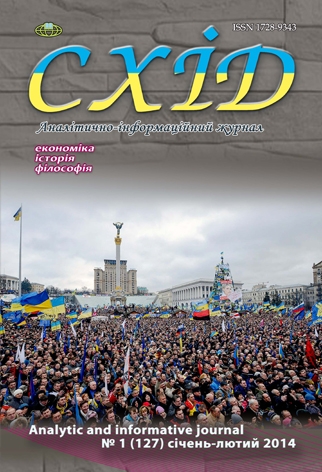Experience in introduction of military priesthood (chaplains) into the Armed Forces of Ukraine
DOI:
https://doi.org/10.21847/1728-9343.2014.1(127).23127Keywords:
pastoral care, military priesthood, chaplains, the Armed Forces of Ukraine, the military, religious organizationsAbstract
The aim of the article is to study the implementation process of the military chaplaincy into the Armed Forces of Ukraine during the independence of Ukraine. Researching of the process of implementing the military chaplaincy into the Armed Forces of Ukraine allowed to divide the process of military and religious cooperation into two periods: from 1992 till 2008 and from 2008 to the present. During the first period there had been established cooperation between religious institutions with the army. During the first period there was establishing of cooperation between churches and religious organizations and the military units. In the first half of the first period this cooperation was unsystematic with no constructive inter-religious cooperation. Most active cooperation of churches and the army was in the western region of Ukraine. Gradually sporadic activities of churches and religious organizations had been getting consolidated interfaith character in this context after 2000. The second period is characterized as a period of consolidated collaboration of churches and religious organizations with the Armed Forces of Ukraine and effective cooperation with the Ministry of Defense of Ukraine and partnerships between the army and religious organizations. There had been established an effective advisory body - the Council for the Pastoral Care of the Ministry of Defense of Ukraine. The Ministry of Defense had been approved a number of legal acts which clearly defined the mechanism of military- religious cooperation. The consolidated decision of the religious and military side was the establishing of a military chaplaincy institute in the structure of the Armed Forces of Ukraine. In this context the legislative work is continuing.
Downloads
References
Директива Міноборони "Про впорядкування питань задоволення релігійних потреб військовослужбовців Збройних сил України" [Електронний ресурс]. - Режим доступу : http://www.irs.in.ua/index.php?option =com_content&view=article&id= 472%3A1&catid=63%3Ava&Itemid=86&lang=uk.
Еленский В. Духовное служение в Вооруженных силах Украины: дискуссии и перспективы / Виктор Еленский // Мир религий [Електронний ресурс]. - Режим доступу : http://www.religio.ru/relisoc/98.html.
Калниш Ю. Досвід та перспективи інституту військових капеланів в Україні та досвід країн НАТО / Юрій Калниш [Електронний ресурс]. - Режим доступу : http://sd.net.ua/2011/12/26/cerkva-armiya-kapelanstvo.html.
Коханчук Р. Роль капеланства у процесі відродження Збройних сил України на початку 90-х років минулого століття / Руслан Коханчук // Військо України. - 2011. - № 8 (134). - С. 20-22.
Меморандум про співпрацю у справах душпастирської опіки військовослужбовців Збройних сил України [Електронний ресурс]. - Режим доступу : http://www.mil.gov.ua/index.php?part=council_pastoral_care&sub=memorandym.
Садовяк Д. Церква і військо в Україні: шляхи співпраці / Д. Садовяк [Електронний ресурс]. - Режим доступу : http://hram.in.ua/index.php?option=com_content&view= article&id=3141:title3690&catid=261&Itemid=42.
Сьомін С. Церква і армія: партнерство чи поглинання? / Сергій Сьомін // Національна безпека і оборона. - 2000. - № 10. - С. 99-104.
Україна-2013: державно-конфесійні відносини // Релігія і влада в Україні: проблеми взаємовідносин. Інформаційно-аналітичні матеріали до Круглого столу "Державно-конфесійні відносини в Україні станом на 2013 рік: рух до партнерства держави і Церкви чи до кризи взаємин?" 22 квітня 2013 р. - К. : [б.в.], 2013. - 76 с.
Церква в українському суспільстві. Матеріали соціологічного дослідження / [авторський колектив: В. П. Перебенесюк - керівник/редактор та ін.]. - К. : ВІП, 2004. - 52 с.
Якою буде модель інституту військового душпастирства в армії? [Електронний ресурс]. - Режим доступу : http://religions.unian.net/ukr/detail/8670.
REFERENCES
Directive Ministry of Defense «On regulation issues meet the religious needs of the Armed Forces of Ukraine», available at: http://www.irs.in.ua/index.php?option=com_content&view=article&id=472%3A1&catid=63%3Ava&Itemid=86&lang=uk (ukr).
Elenskiy V., Spiritual service in the Armed Forces of Ukraine: Debates and Perspectives, Mir religii, available at: http://www.religio.ru/relisoc/98.html (rus).
Каlnysh Yu. (2011) Experience and Prospects institute of military chaplains in the Ukraine and experience of NATO, available at: http://sd.net.ua/2011/12/26/cerkva-armiya-kapelanstvo.html (ukr).
Kokhanchuk R. (2011), The role of chaplains in the Armed Forces of Ukraine revival in the early 90s of the last century, Viisko Ukrainy, 8 (134), pp. 20-22 (ukr).
Memorandum of Cooperation on Pastoral Care of the Armed Forces of Ukraine, available at: http://www.mil.gov.ua/index.php?part=council_pastoral_care&sub=memorandym (ukr).
Sadoviak D., The church and the army in Ukraine: Ways of cooperation, available at: http://hram.in.ua/index.php?option =com_content&view=article&id=3141:title3690&catid=261&Itemid=42 (ukr).
Somin S. (2000), The church and the army: partnership or takeover?, Natsionalna bezpeka i oborona [National Security and Defense], 10, pp. 99-104 (ukr).
Ukraine 2013: Church-state relations, Religion and Power in Ukraine: problems of relationships. Informational materials for the Round Table «Church-state relations in Ukraine as of 2013: moving towards partnership between the state and the Church, or to the relationship crisis?» April 22, 2013 (2013), Кyiv, 76 p. (ukr).
Perebenesiuk V. P., ed. (2004), Church in Ukrainian society. Sociological research, Kyiv, 52 p (ukr).
What will be the model institution of the military chaplaincy in the army?, available at: http://religions.unian.net/ukr/detail/8670 (ukr).
Downloads
Published
How to Cite
Issue
Section
License
Copyright (c) 2014 Larysa Vladychenko

This work is licensed under a Creative Commons Attribution-NonCommercial-NoDerivatives 4.0 International License.
1. Authors bear responsibility for the accuracy of facts, quotations, numbers and names used.
2. Manuscripts are not sent back.
3. The publisher does not always agree with the authors' opinion.
4. The authors reserve the right to authorship of the work and pass the first publication right of this work to the journal under the terms of a Creative Commons Attribution-NonCommercial-NoDerivatives 4.0 International License. This license allows others to distribute (copy) the published work for non-commercial purposes, provided there is mandatory attribution to its authors and a link to the first publication in our journal.
5. The authors have the right to conclude separate supplement agreements that relate to non-exclusive work distribution in the form in which it has been published by the journal (for example, to upload the work to the online storage of the journal or publish it as part of a monograph), provided that the reference to the first publication of the work in this journal is included.

